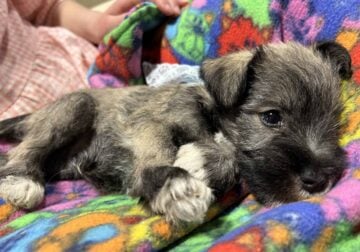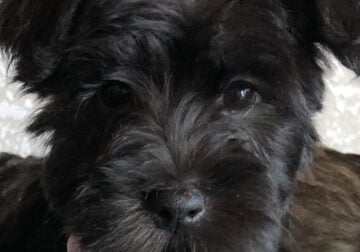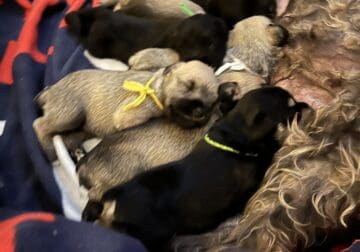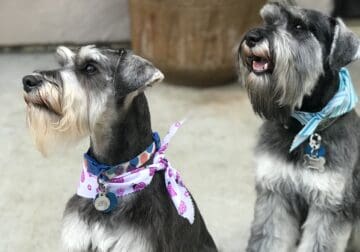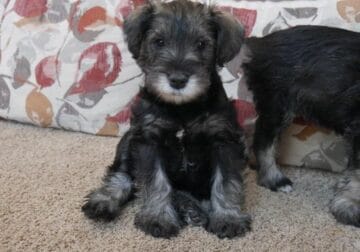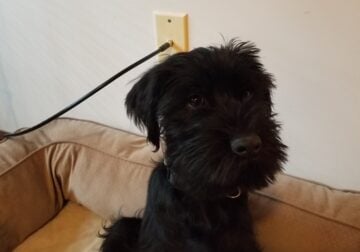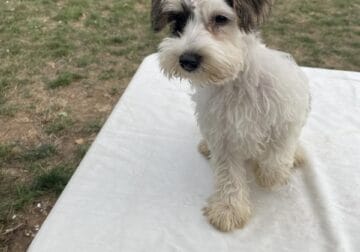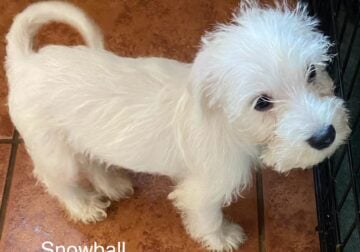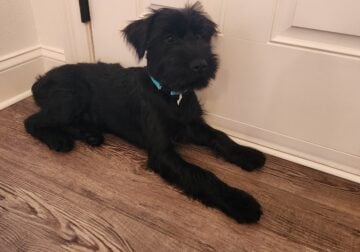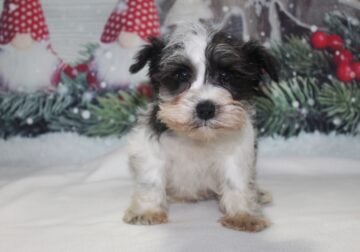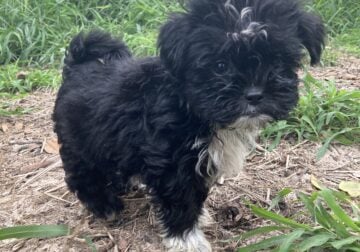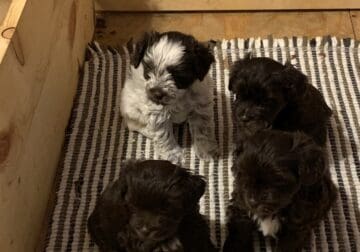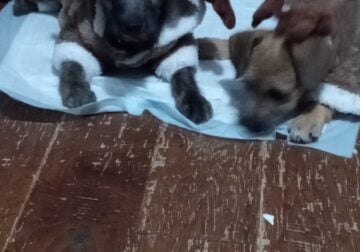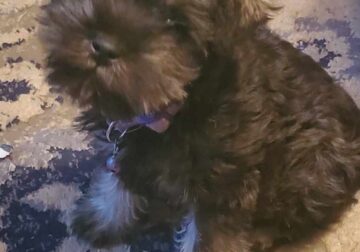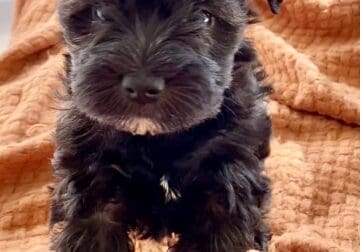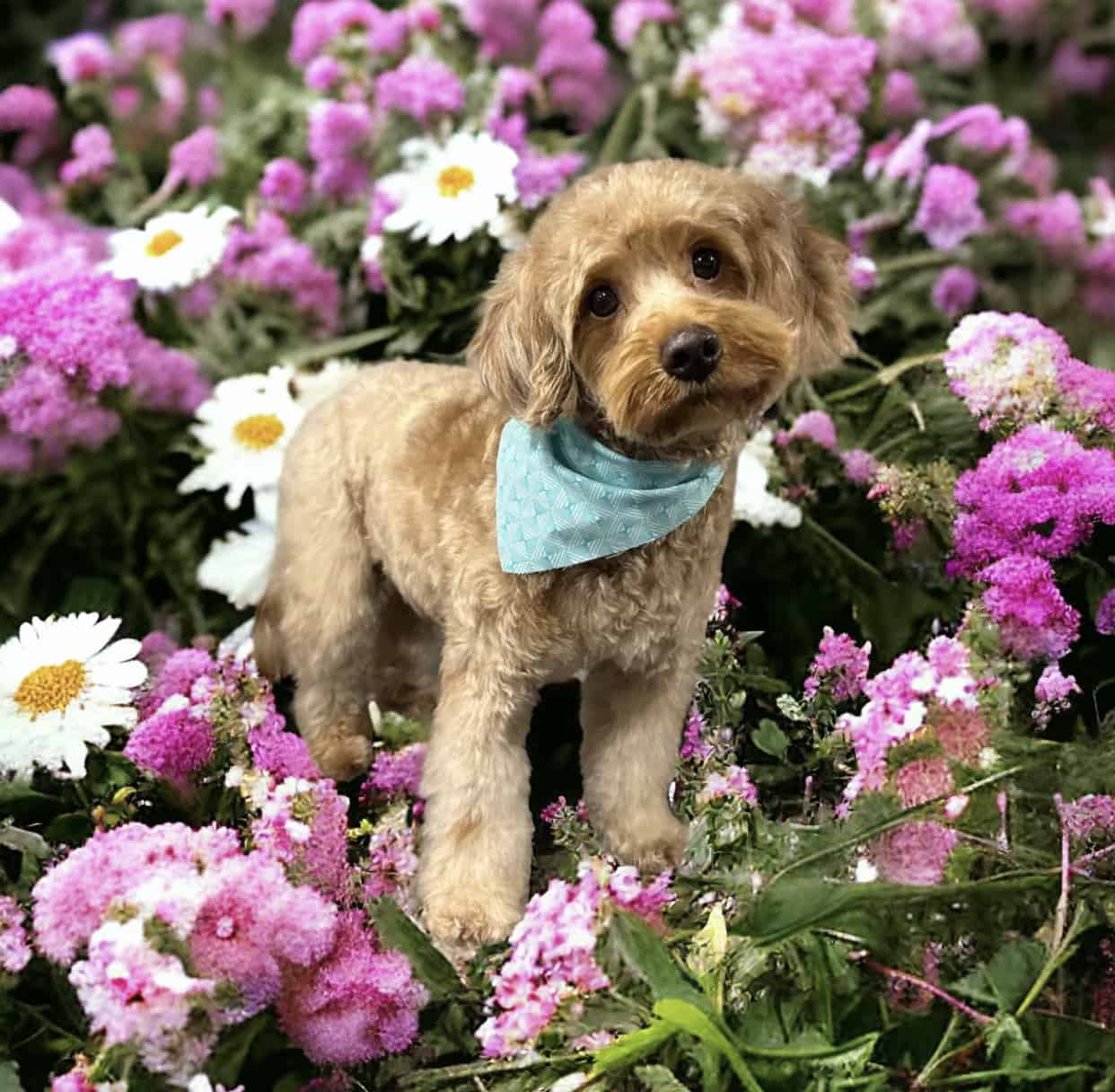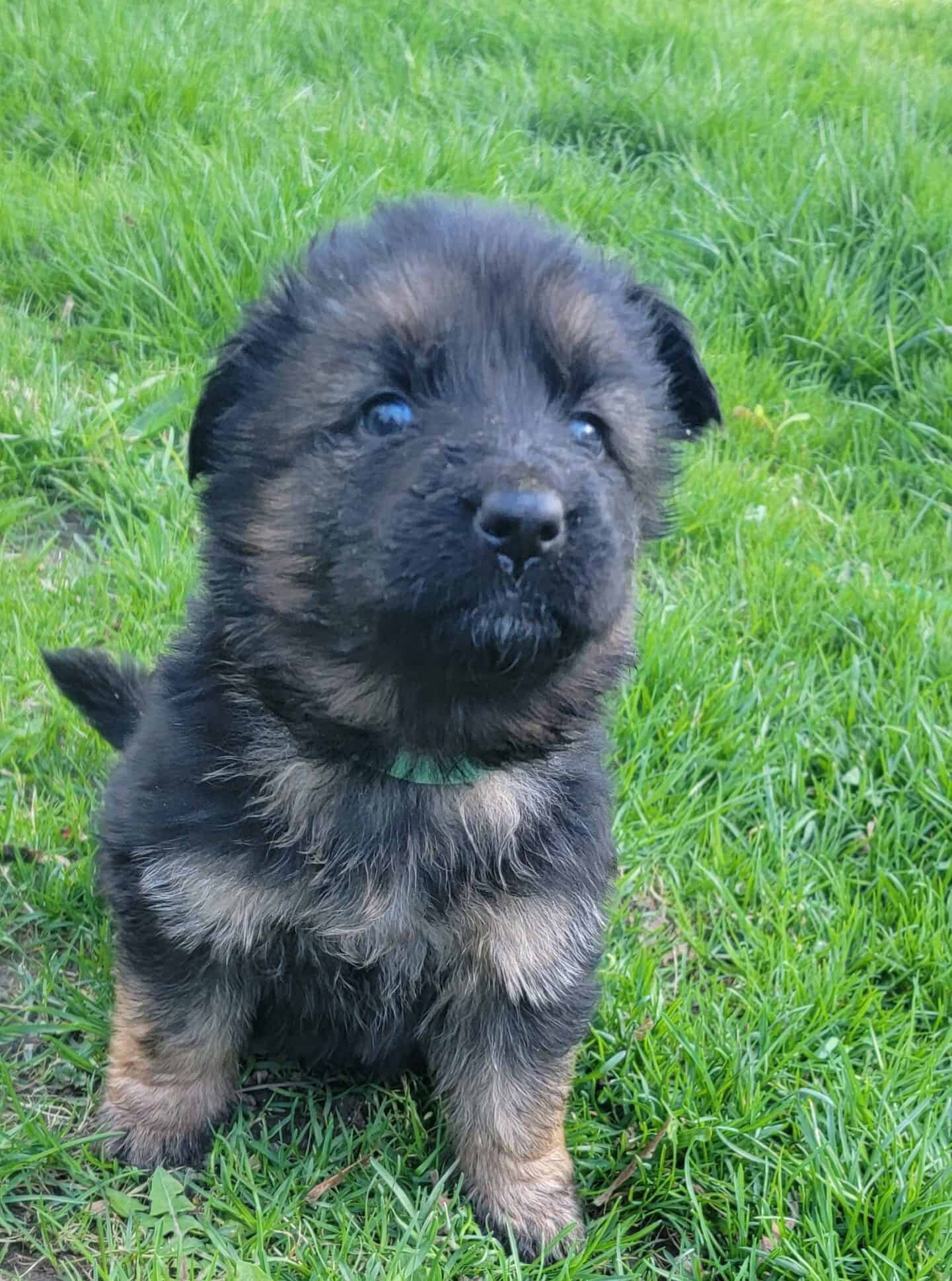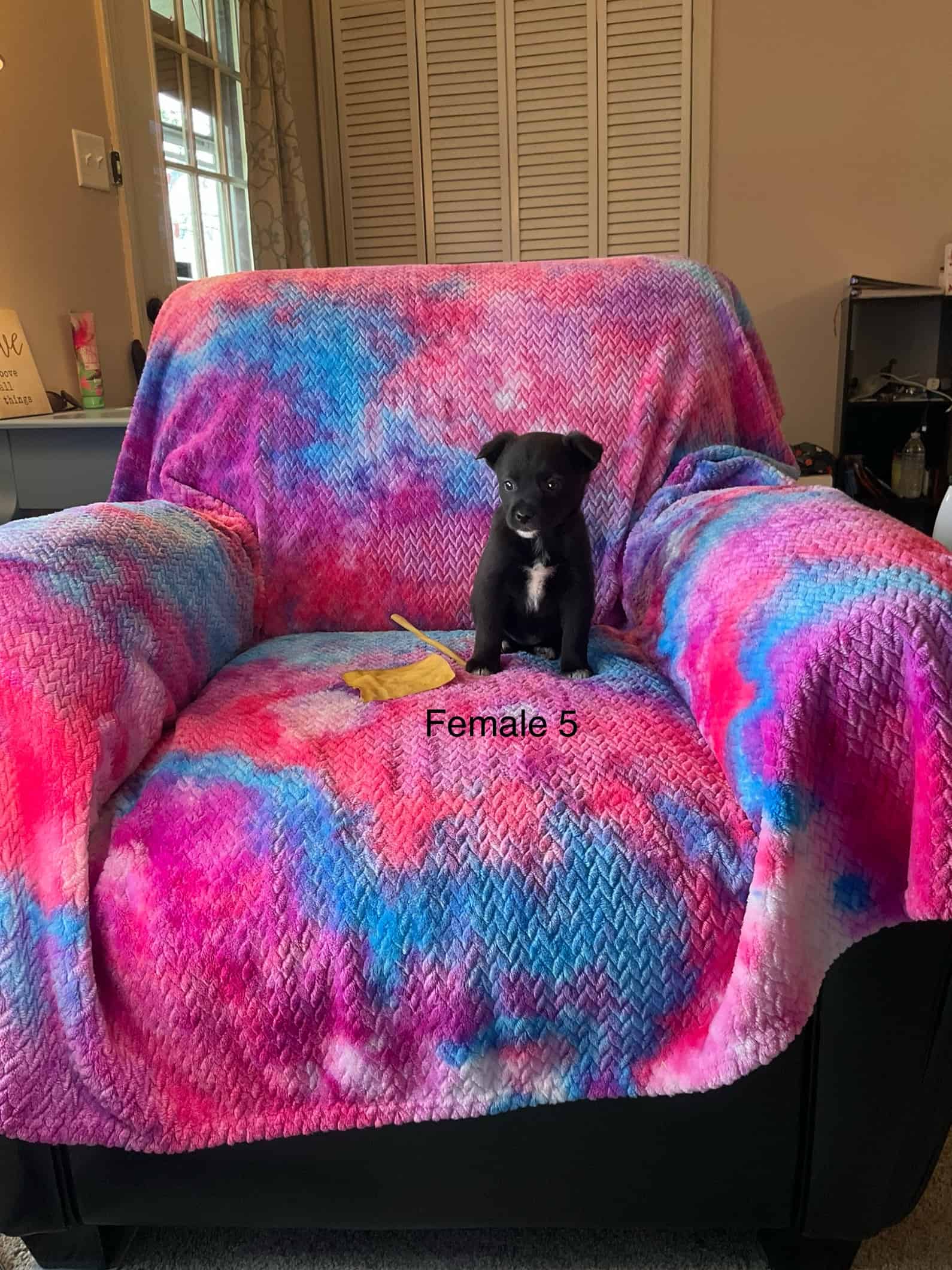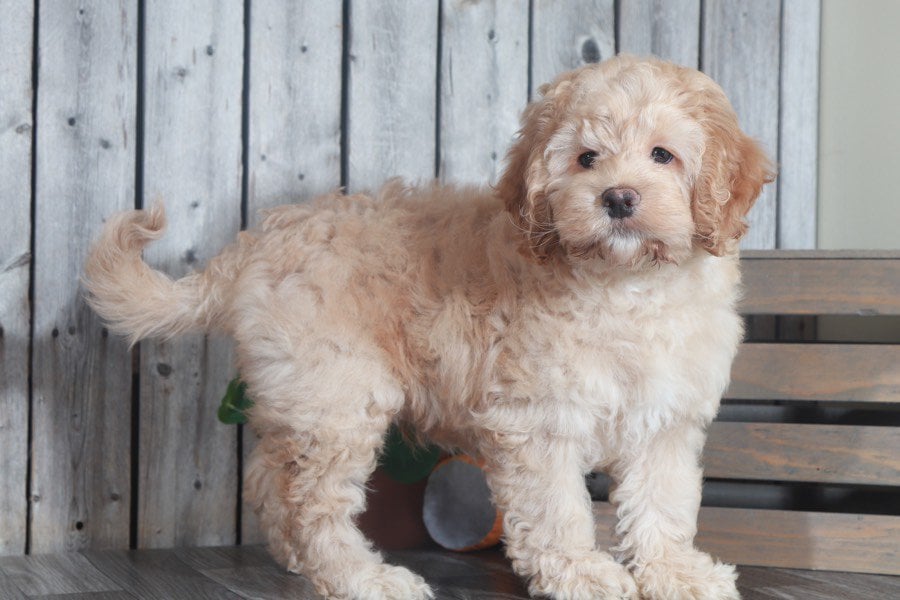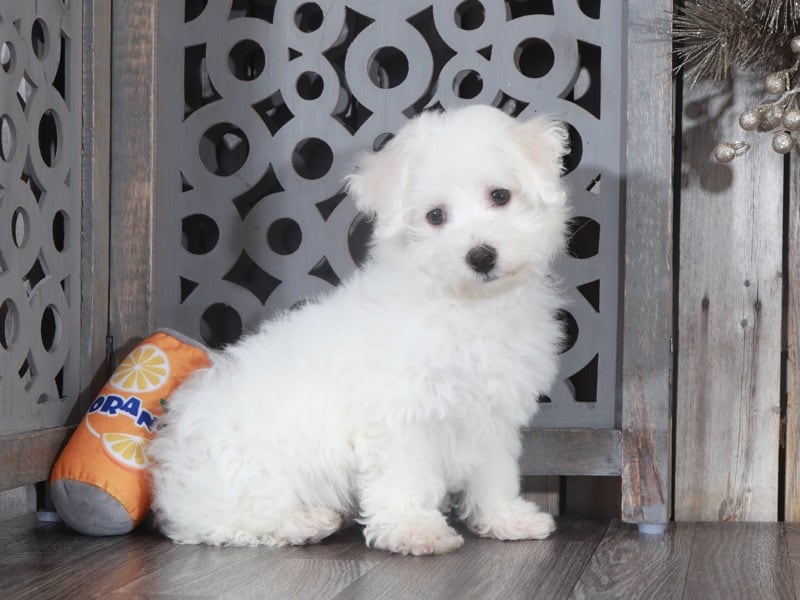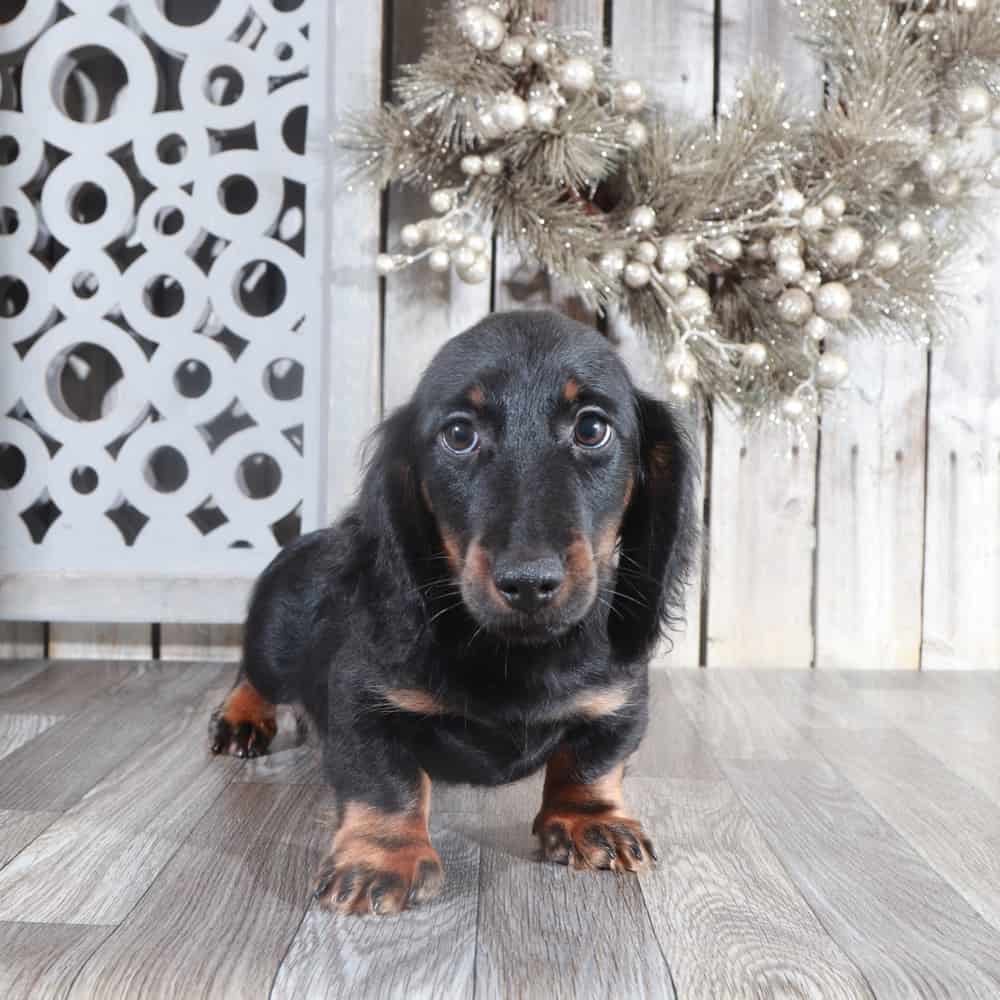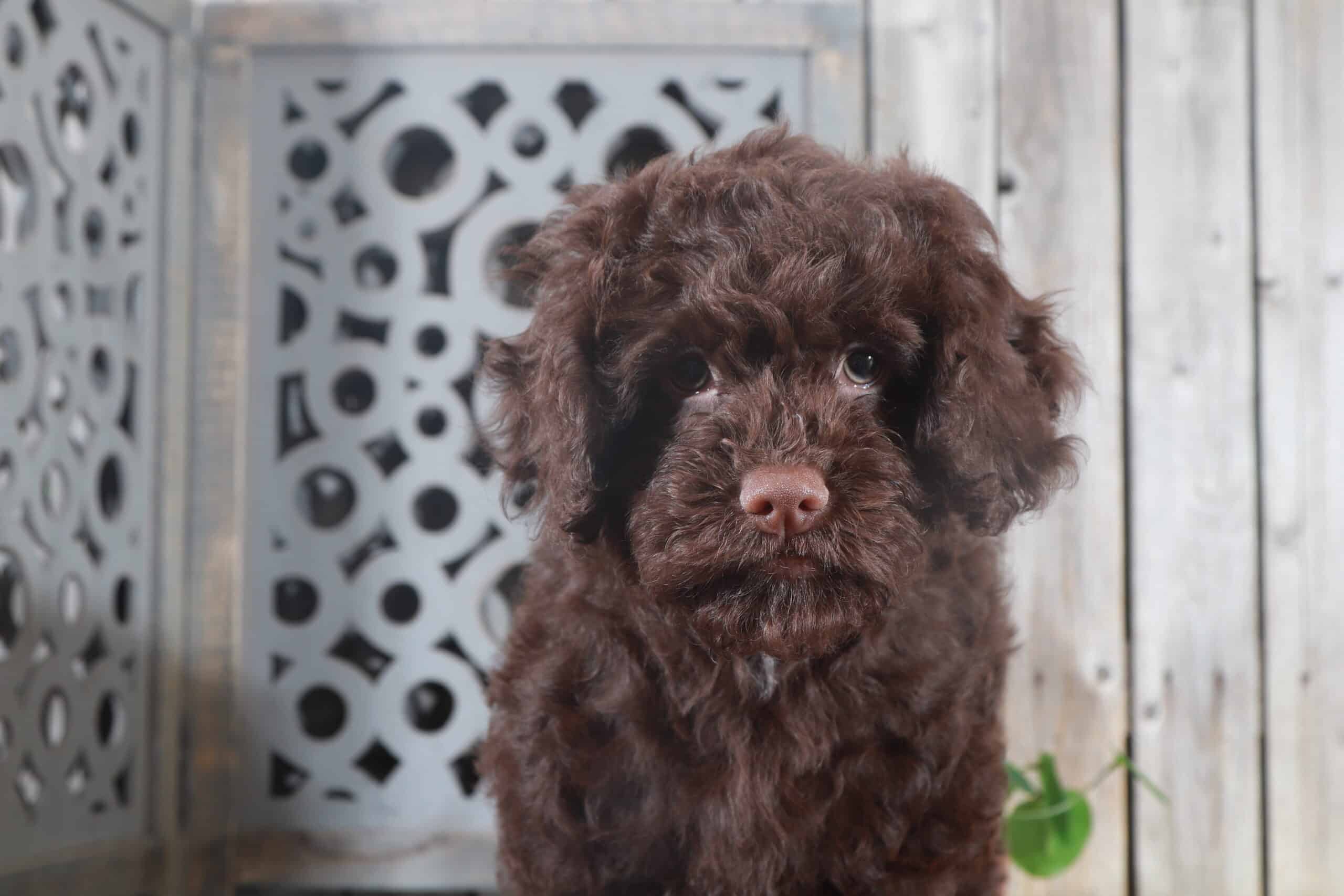Popular Filters:
Standard Schnauzer puppies $400
Schnauzer for Sale: A German Native with Class and Humor
Schnauzers are small to large dogs that come in three varieties. Over time, the different Schnauzers classified by size have become three distinct breeds, all recognized by the AKC. In deference to the limitations of this article’s scope, its focus will be on the Standard Schnauzer. It will address deviations from the Standard by referring to variants of the same breed. Other articles cover the specific breeds in detail. Schnauzers make ideal companions for the everyday family because they are smart and engaging, get along with kids and other pets, are not one-person dogs, and do not have excessive exercise requirements.
Overview of Schnauzer Dog
Background
Schnauzers have a rich history. As you might guess from the name, the Schnauzer originated in Germany in the 1300s and underwent development from then through the 1700s. There are three varieties, the Standard Schnauzer being the first and from which the Giant and Miniature were begotten. The most compelling theory is that the Schnauzer was a wire-haired variant of the German Pinscher. Standard Schnauzers were bred as ratting dogs and also used to guard property, tend livestock, and transport messages in wartimes. Their coat is unique in texture and color, possibly a result of infusions from the Keeshond and black Poodles.
Rise of the Variants
In the 1600s, people who worked with Schnauzers sought a larger dog to drive livestock and serve as a more effective guard dog. Giant Schnauzers also found use in the military and on the police force. If you are a German Shepherd enthusiast, then you know the first registered GSD was a Thuringian Shepherd called Horand von Grafrath. Thuringian Shepherds, named for the corresponding German region where they worked, gave intensity, drive, athleticism, and the type look to the GSD. They also likely contributed to the Giant Schnauzer as did Great Danes, Rottweilers, and Doberman Pinschers. Note that any Great Danes crossed with Standard Schnauzers were usually black to preserve the Schnauzer’s dominant and unusual color. Miniature Schnauzers did not come about until the 1800s, likely a result of the outcross between Standard Schnauzers and the Miniature Poodle and Affenpinscher.
Appearance of Schnauzer for Sale
All varieties of Schnauzers have the same breed standard except for size. The Schnauzer should strike you as a square dog as tall as she is long. She has an elongated head with arched brows complete with wiry fur and small to medium oval eyes. Schnauzers have medium-sized V-shaped button ears (fold forward). A Schnauzer’s ears are frequently cropped in the US, leaving the pinna of medium length and narrow width and removing much of the bell. The neck is thick and powerful with a moderate arch and strongly muscled shoulders, flanks, and legs. In profile, the Schnauzer has a strong back that slopes gently down toward the barely curved croup. The tail has a high set, and the dog carries it upright. Usually, a Schnauzer has a docked tail. Schnauzers are very short-coupled with a broad and moderately deep chest. The body is compact and neither coarse nor fine.
Size Variations
- Standard – 18 to 20 inches tall, 30 to 50 pounds
- Giant – 24 to 28 inches tall, 75 to 95 pounds
- Miniature – 12 to 14 inches tall, 10 to 20 pounds
Coat and Colors
The Schnauzer is a double-coated dog with soft dense underfur and wiry, harsh, and thick outer hairs. A Schnauzer is defined by its differing coat lengths. The fur is longer on the legs and on parts of the face to form the prominent brows, beard, and mustache. Colors are restricted to solid black or salt and pepper. Black dogs should have the same color undercoat. Some black dogs have rust, brown, red, or tan shading that bleeds through the coat, but this is a serious fault in the show ring. Stray gray hairs are also faulted. Salt and pepper dogs may have a fawn, gray, or tan undercoat. Miniature Schnauzers have an additional color of silver.
Temperament
Schnauzers of all types embody the high spirits and obedience of working dogs. They are intelligent, bold, fearless, friendly, outgoing, and agile. Giant Schnauzers have a guarding instinct while Miniatures are lively and animated without resembling the Toy breeds. Schnauzers tend to spread affection equally among all members of a household. While you might be surprised that your Schnauzer does not act like a terrier, this is because there is not a close relationship despite the Miniature’s placement in the AKC. Your Schnauzer will probably remind you more of a Doberman than a terrier. Standard Schnauzers are easy-going around kids, tolerating their antics good-naturedly. Schnauzers tend to get along with other dogs if their socialization and training are sound from an early age. A few individuals think they are larger than life, and other dogs may find them offensive. Miniature Schnauzers, especially, can be too pushy. You might be able to nip same-gender dog aggression in the bud by neutering your pet. Schnauzers can get along with cats that live with them, but some have a strong drive to chase unfamiliar small animals.
Health
The Schnauzer dog is robust and healthy, living 10 to 16 years depending on the variant. Miniatures, surprisingly, have the shortest life expectancy at 12 to 14 years. Health issues fit a wide spectrum.
When you are about to acquire a Schnauzer puppy, check into whether the breeder can provide results for any screening tests. Relevant evaluations for Schnauzers include specialist exams or OFA certifications of the parents’ hip, elbows, and heart. DNA tests can now screen for carriers of hypothyroidism and myotonia congenita.
Caring for Schnauzers
Schnauzers for sale do not have extreme care requirements.
Feeding the Schnauzer Puppy
Hopefully, a Schnauzer puppy for sale will come with a small sample of the food it has been eating. If so, you can change over gradually to whatever you want to feed. Schnauzer puppies require three or four meals a day. Each day you should supply your puppy with 50 to 70 calories per pound of bodyweight depending on where she is in her growth cycle (rapid phase needs more food) and how active she is. Always provide high-quality proteins and fat, avoiding high-fat options.
Food for Schnauzer Dog
Adult Schnauzers require 25 to 35 calories per pound of body weight daily. The smaller his adult size, the more calories per pound he will need. Feeding two or more portions a day will help avoid problems like bloat and wildly fluctuating blood sugar levels. Diabetics may benefit from specialized diets. If your dog is susceptible to pancreatitis, you will have to adjust fat levels and perhaps increase omega-3 fatty acids. Urinary bladder stones will also require a permanent adjustment in the diet to regulate the amount and kind of minerals your dog ingests.
Exercise
Schnauzers require 40 to 75 minutes of daily exercise. Activities should include running or jogging, walking, basic and advanced training, socialization, and games of engagement. Engagement and training will enrich your dog’s mind and include activities like fetch and tug of war. Advanced training for adult Schnauzers can involve agility or Shutzhund. Puppies need less physical activity, able to exercise themselves through play. You must give attention to your pup’s growing skeleton as well as focusing on socialization and basic obedience. A Schnauzer puppy for sale may already be eight to ten weeks old while the window for the largest gains in social skills closes at about 16 weeks of age.
Grooming
As a wirehaired breed, you would typically strip your Schnauzer. However, their fur is quite thick, and the standard only calls for enough stripping to define the dog’s conformational strengths. It also suggests clipping specific areas such as the neck and belly. Many owners give their Schnauzers full body clips for easier management, leaving the face. The Schnauzer is a common sight with professional groomers. Schnauzers require brushing once or twice a week to remove dry skin and loose hairs. You can clip their nails every one to two months and brush their teeth every day or two. Some also require you to express their anal sacs which lie just inside the rectum on each side. You can alternatively leave this task to your groomer. You should wipe your Schnauzer’s face daily and clean her ears whenever she gets a bath once a month. Allergic Schnauzers may require weekly baths and are more prone than other dogs to ear infections. You should prepare any Schnauzer puppy for sale for an extensive grooming routine. Many groomers will start with a minimal clip to get the pup used to the clippers and to people handling his feet, ears, and mouth.
Training
During training, the challenge is keeping your lively Schnauzer from becoming bored. Maintaining an upbeat attitude will keep your pet enthusiastic, interested, and engaged. Also important to training your Schnauzer is positivity. Training progress should be met with rewards and praise for reinforcement. Schnauzers are easy to train, naturally obedient, and willing to please.

